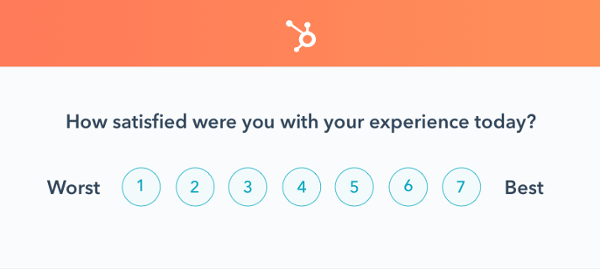How to Design Customer Satisfaction Surveys That Get Results [+Templates]
If you pretend there's not a problem, does it actually go away?
Of course not. But the way many businesses treat customer satisfaction and customer success, it seems like that's common wisdom.
Measuring customer satisfaction allows you to diagnose potential problems, both at the individual and aggregate level. More importantly, it allows you to improve over time.
Want 5 free customer satisfaction survey templates you can implement immediately? Click here.
How do you gauge customer satisfaction? It all comes down to customer satisfaction surveys.
In this post, we'll present everything you need to know about customer satisfaction surveys. And, to help you find the exact information you're looking for, here's a table of contents guide you through this post.
Table of Contents
- Customer Satisfaction Survey
- Why Customer Satisfaction Surveys Are Important
- Customer Satisfaction Surveys Examples and Templates
- Customer Satisfaction Question Types and Survey Design
- When Should You Send Customer Satisfaction Surveys?
- Customer Satisfaction Survey Best Practices
Customer Satisfaction Survey
Customer satisfaction surveys are used to gauge how your customers feel about your company or a given experience with your company. These surveys can come in many different forms, and you can use these surveys to segment customers based on satisfaction scores, measure relative customer satisfaction scores over time, or find insights for customer experience improvements.
Customer satisfaction surveys measure customer satisfaction score, or CSAT, which is a basic measure of how happy or unhappy the customer was with an experience with a product or service, or with a specific interaction with the customer service team.
Here's a basic example of what a customer feedback survey might look like in your email inbox or within an app:

Why Customer Satisfaction Surveys Are Important
New companies are starting up every day, and competition is in abundance. One of the differentiating factors is what your consumers think about you. Big companies like Apple are thriving on taking their customer's needs into consideration, and adding new and requested innovative features to their products.
Customers share good experiences with an average of 9 people and poor experiences with about 16 (nearly two times more) people -- so it's imperative you figure out customer issues and try your best to solve them before they go viral on Yelp or social media.
There are so many benefits of asking for feedback on customer satisfaction:
1. Customer feedback provides insights to improve the product and overall customer experience.
It's imperative to find out what your customers think about your product. Listening is important to keep your customers happy. Taking their expectations into account increases their loyalty toward the brand.
2. Customer feedback can improve customer retention.
You are connected directly with the customers, thanks to their feedback. If your customer is unhappy, you can listen to them, work toward making the product more customer-friendly, and develop a deeper bond with them. In situations where a customer faces a problem with your product and gets it solved instantly, the customer becomes more loyal to your brand and is likely to stick around for long.
3. Customer feedback identifies happy customers who can become advocates.
After you offering customers with an experience that exceeds their expectations, you find your own marketers. Customers are likely to recommend your product/service to their friends or relatives, and this is a great way to stand out from your competition. Referrals are a free and effective way of marketing, thanks to word of mouth. Per research by Wharton School of Business, a referred customer costs less to acquire and has a 16% higher lifetime value.
There's a term in psychology that explains the reasoning behind this: "emotional arousal." Emotional arousal measures a combination of a physiological and psychological response to an experience.
As an example, think about the last time you gave a big speech or were anticipating an event (say in the last few minutes of a close game with your favorite sports team).
In these situations, your palms are sweaty and your heart is pounding, which are the same physiological reactions that occur when you're scared or nervous (say, when you hear a weird noise outside your tent when you're camping).
All of these are "high-arousal" emotions.
Comments
Post a Comment